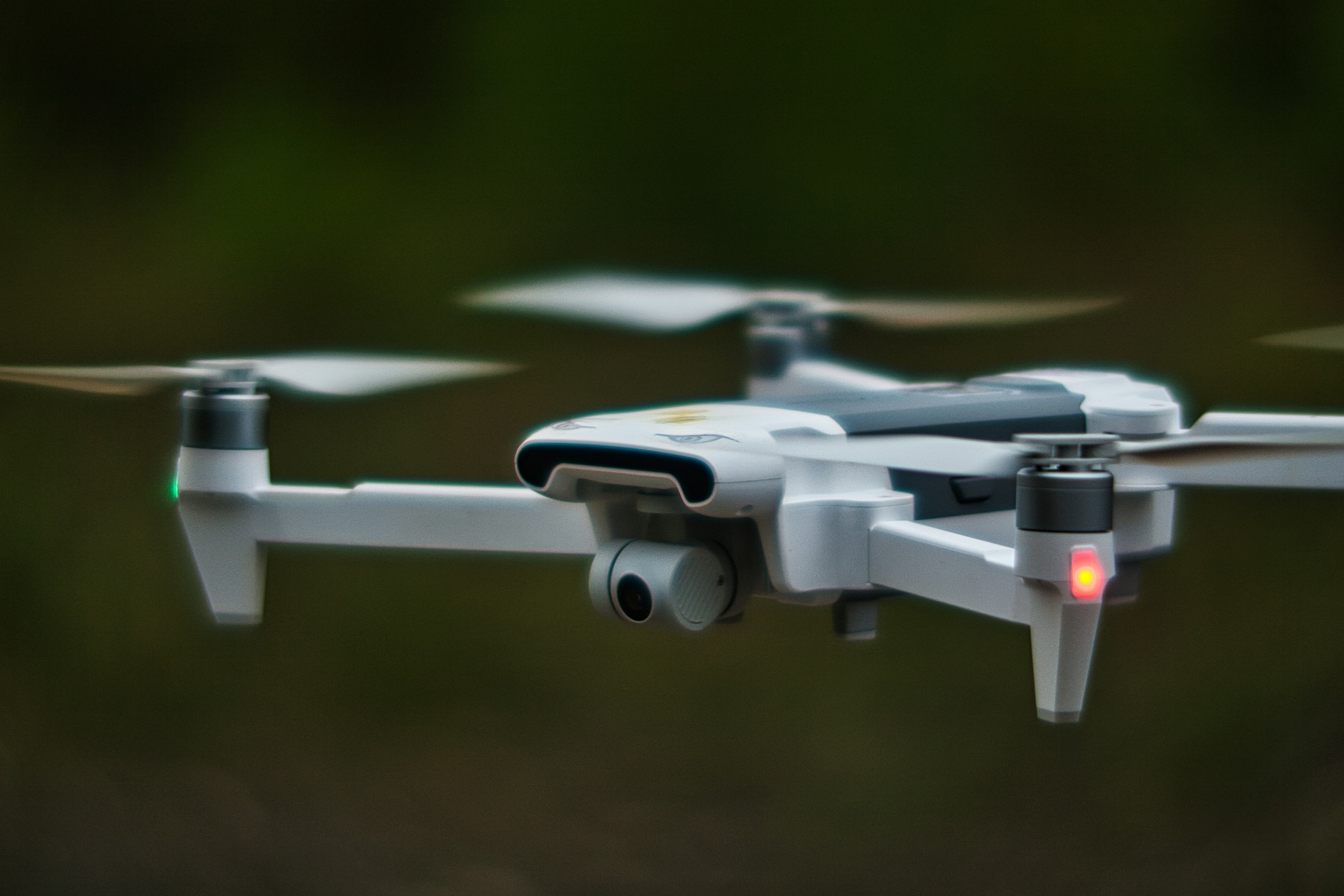
Seasonal Hiring Peaks for UAV Jobs: The Best Months to Apply & Why
The UK's UAV (Unmanned Aerial Vehicle) sector has established itself as one of Europe's most dynamic and strategically important technology markets, with roles spanning from junior drone operators to principal UAV engineers and heads of autonomous systems development. With UAV positions commanding salaries from £28,000 for graduate drone pilots to £85,000+ for senior UAV systems engineers, understanding when organisations actively recruit can dramatically accelerate your career progression in this revolutionary and rapidly expanding field.
Unlike traditional aviation roles, UAV hiring follows distinct patterns influenced by seasonal operations, government regulatory frameworks, and autonomous systems development timelines. The sector's unique combination of aeronautical engineering, autonomous control systems, and data analytics creates predictable hiring windows that strategic professionals can leverage to advance their careers in building tomorrow's unmanned aviation and autonomous aerial systems.
This comprehensive guide explores the optimal timing for UAV job applications in the UK, examining how national drone strategies, seasonal operational cycles, and UAV technology initiatives influence recruitment patterns, and why strategic timing can determine whether you join a pioneering autonomous systems team or miss the opportunity to develop the next generation of unmanned aircraft and aerial intelligence systems.
January to March: Aviation Budgets and Operations Implementation
The opening quarter consistently represents the strongest period for UK UAV hiring, with January through March demonstrating 85-110% higher job posting volumes compared to other periods. This surge directly correlates with government aviation initiatives, approved operational budgets, and the recognition that UAV systems require sophisticated aeronautical engineering and autonomous systems expertise.
Why Q1 Dominates UAV Recruitment
Most UK organisations, from FTSE 100 technology companies to innovative drone startups, finalise their UAV operations and development budgets during Q4 and begin execution in January. Autonomous aircraft projects that spent months in design development and regulatory approval phases receive approval and funding, creating immediate demand for UAV specialists across multiple technical disciplines.
Future Flight Challenge strategies play a crucial role in Q1 hiring surges. Chief Engineers and Head of UAV Development who spent the previous quarter developing proposals for beyond visual line of sight operations, urban air mobility, and autonomous delivery systems receive approved budgets and headcount to execute their aviation strategies.
Commercial drone commercialisation initiatives often commence in January as organisations seek to leverage UAV technology for surveying applications, inspection services, and data collection operations. These initiatives require substantial expertise in flight control systems, sensor integration, and autonomous navigation algorithms.
Operational and Development Cycle Alignment
Corporate UAV initiatives frequently begin in Q1, creating opportunities for drone specialists interested in applied aviation engineering, novel autonomous system development, and innovative applications of unmanned aircraft across various operational domains.
University-industry UAV partnerships often commence during January as academic institutions and commercial organisations initiate collaborative research projects requiring UAV engineers who can bridge theoretical aeronautical science with practical aviation applications.
UAV testing facility expansions peak during Q1 as organisations invest in experimental aircraft projects and emerging technology exploration that requires aviation professionals with diverse engineering backgrounds and flight systems experience.
UAV Project Lifecycle
Autonomous systems development initiatives that were conceptualised during the previous quarter typically commence implementation in January, creating demand for UAV engineers skilled in flight control design, sensor fusion, and autonomous navigation programming.
Commercial UAV deployments often begin in Q1 as organisations transition prototype aircraft into operational service applications requiring UAV specialists who understand both development processes and aviation regulatory considerations.
Safety management systems and regulatory frameworks increasingly drive Q1 hiring as organisations recognise the importance of aviation compliance and require specialists in airworthiness, risk assessment, and UAV certification processes.
Strategic Advantages of Q1 Applications
Applying for UAV roles during Q1 offers several competitive advantages beyond opportunity volume. Hiring managers possess clearly defined project requirements and approved budgets, reducing uncertainty that can delay recruitment decisions during other periods.
Salary negotiation leverage peaks during Q1 as organisations work with fresh budget allocations rather than remaining funds. This is particularly relevant for specialised roles in areas like autonomous flight systems, sensor payload development, and AI-powered navigation, where expertise scarcity creates premium compensation opportunities.
For professionals transitioning into UAVs from aeronautical engineering, software development, or data analytics, January through March provides optimal success rates as organisations invest in comprehensive UAV training programmes and mentorship opportunities during stable budget periods.
September to November: Academic Cycles and Operational Planning
Autumn represents the second major hiring peak for UK UAV positions, with September through November showing distinct recruitment patterns driven by academic research cycles, aviation funding announcements, and strategic planning for following year drone initiatives.
Academic and Research Institution Alignment
University UAV collaborations intensify during autumn months as academic institutions commence new autonomous systems projects and seek industry partnerships. This creates opportunities for UAV specialists interested in fundamental research and cutting-edge aircraft development.
MEng and PhD completion cycles create talent availability during September-November as students in aeronautical engineering, robotics, computer science, and autonomous systems complete their degrees and seek industry transitions.
UAV research funding announcements from bodies like EPSRC, Innovate UK, and European aviation programmes often occur during autumn, creating hiring opportunities within both academic institutions and their commercial partners.
Strategic Planning and Budget Preparation
Autumn hiring serves strategic functions for UK UAV teams preparing budget requests and aviation proposals for the following year. UAV leaders use Q3 and Q4 to build capabilities that demonstrate autonomous systems value and justify increased investment in drone initiatives and aviation programmes.
Commercial drone proof-of-concept acceleration often occurs during autumn as organisations develop compelling demonstrations of UAV value to support budget requests for full-scale aviation implementations during the following year.
UAV conference season networking during autumn months, including events like AUVSI Xponential, Commercial UAV Expo, and various aviation technology conferences, creates visibility and networking opportunities that directly translate into hiring conversations.
Industry-Specific Operational Cycles
Agricultural drone cycles often align with autumn hiring as farming operations prepare crop monitoring, precision agriculture, and livestock management projects requiring specialists in agricultural aviation and rural UAV applications.
Infrastructure inspection shows strong autumn patterns as utility companies prepare pipeline monitoring, powerline inspection, and structural assessment for the following year's maintenance requirements.
Emergency services UAV research peaks during autumn as organisations prepare search and rescue, disaster response, and public safety automation, requiring UAV engineers who can develop resilient aviation systems and emergency response applications.
Skills Development and Professional Growth
Autumn UAV programmes and advanced degree completions create career advancement opportunities that often coincide with job transitions. Professionals completing aviation courses, UAV specialisations, or autonomous systems programmes enter the job market with enhanced credentials.
Professional development in areas like beyond visual line of sight operations, sensor integration, or artificial intelligence for aviation provides valuable credentials for career advancement during peak hiring periods.
April to June: System Development and Graduate Integration
Late spring and early summer represent unique hiring opportunities in UAV technology, driven by operational system development phases, graduate recruitment programmes, and the growing demand for fresh talent with current knowledge of drone platforms and autonomous flight systems.
UAV System Development and Implementation
Autonomous flight implementation initiatives that commenced during Q1 often require additional UAV expertise during April-June as projects transition from design phase to flight testing and operational deployment phases.
UAV software development and flight control programming frequently accelerate during spring months as organisations implement autonomous aircraft and require specialists in flight control algorithms and system integration.
Sensor payload integration projects often peak during spring as organisations enhance their data collection capabilities and require UAV engineers who can bridge theoretical sensor technology with practical aircraft implementation.
Graduate Recruitment Excellence
UAV graduates from MEng programmes, PhD completions, and undergraduate degrees with strong engineering backgrounds become available during April-June, creating opportunities for organisations to recruit talented individuals with current knowledge of flight systems and autonomous navigation.
Aviation placement conclusions often occur during spring months, with successful placement students receiving permanent offers and creating replacement hiring opportunities within UAV development teams.
International student availability peaks during spring as visa processing completes and graduates from top-tier global aviation programmes seek opportunities within the UK's expanding UAV ecosystem.
UAV Innovation and Development Cycles
Summer UAV projects require additional engineering mentorship and technical supervision, creating opportunities for mid-level and senior UAV engineers to advance into leadership roles whilst organisations expand their teams.
Technical conference and publication preparation during spring months creates opportunities for UAV professionals to demonstrate aviation leadership through autonomous systems publications and technical contributions that attract attention from potential employers.
Open source flight control contributions often accelerate during spring months as UAV developers complete research projects and seek to demonstrate practical capabilities through contributions to drone libraries and autonomous systems repositories.
Startup and Aviation Innovation Activity
Venture capital funding for UAV and drone technology startups often results in spring hiring surges as funded companies expand their engineering and development capabilities to support innovative aircraft development.
UAV accelerator programme conclusions create opportunities as graduates from aviation innovation programmes and technology incubators seek to hire UAV engineers for their emerging autonomous technologies and drone applications.
Research Funding Cycle Influence on Hiring Patterns
UAV hiring patterns correlate strongly with aviation research funding cycles, academic collaboration schedules, and the evolution of autonomous systems technology and unmanned aircraft research priorities.
Government and Public Aviation Funding
UK UAV research centre programme announcements create hiring opportunities within universities, research institutes, and their commercial partners as interdisciplinary aviation projects commence requiring UAV specialists with diverse engineering expertise.
Innovate UK Future Flight competitions drive hiring within small and medium enterprises as successful applicants expand their teams to execute funded UAV and autonomous aircraft projects.
EPSRC Autonomous Systems Hubs create opportunities for UAV professionals interested in fundamental research and applications spanning autonomous navigation, swarm systems, unmanned aircraft, and intelligent aviation.
Industry Research Partnerships
UAV Collaborative Doctoral Training programmes create hiring patterns as organisations participate in drone PhD supervision and seek to recruit graduates from these programmes upon completion of autonomous systems research.
Knowledge Transfer Partnerships drive hiring for UAV specialists who can facilitate technology transfer between aviation research and commercial applications across various operational sectors.
Aviation innovation centres create opportunities within research facilities focusing on areas like autonomous flight, sensor integration, and UAV applications where drone technology drives technological advancement.
International Aviation Collaboration
European UAV initiative participation creates hiring opportunities as UK organisations maintain international aviation collaboration, requiring UAV specialists who can navigate cross-border technology development partnerships.
Global autonomous systems initiative involvement in areas like urban air mobility, cargo delivery, and emergency response creates opportunities for UAV professionals interested in addressing aviation challenges through international collaboration.
Sector-Specific Variations Within UAV Technology
Different segments within the UK UAV ecosystem follow distinct hiring patterns reflecting their unique operational requirements and application priorities.
Defence and Security UAV Operations
Military UAV systems show pronounced Q1 hiring peaks aligned with defence procurement cycles and annual technology implementations. Defence contractors, security companies, and government agencies create substantial demand for UAV specialists with expertise in surveillance systems, reconnaissance platforms, and tactical aviation applications.
Counter-drone technology implementation drives hiring for professionals who can develop detection systems, electronic warfare capabilities, and airspace security solutions for defence applications.
Intelligence gathering UAV create ongoing hiring demand for specialists who understand classified operations, sensor integration, and the application of drone technology to national security and surveillance operations.
Commercial and Industrial UAV Services
Infrastructure inspection creates hiring patterns aligned with utility maintenance cycles and asset management programmes requiring specialists in powerline inspection, pipeline monitoring, and structural assessment using aerial platforms.
Survey and mapping UAV show hiring aligned with construction cycles and land development phases, creating demand for specialists in photogrammetry, LiDAR systems, and geospatial data collection.
Emergency services drones drive hiring for professionals who can develop search and rescue systems, disaster response capabilities, and public safety applications for emergency service organisations.
Agricultural and Environmental UAV Applications
Precision agriculture development within farming and land management organisations creates sustained hiring demand for UAV specialists who can develop crop monitoring systems, livestock management, and agricultural data analytics.
Environmental monitoring UAV drive hiring patterns aligned with conservation cycles and environmental assessment requirements, particularly strong during ecological survey seasons.
Forestry and wildlife management create hiring opportunities for specialists who can develop habitat monitoring, anti-poaching systems, and conservation technology for environmental applications.
Logistics and Delivery UAV Systems
Autonomous delivery systems create ongoing hiring demand for specialists who can develop last-mile delivery, cargo transport, and logistics automation using unmanned aircraft systems.
Warehouse automation UAV drives hiring for professionals who understand inventory management, automated inspection, and warehouse monitoring applications for retail and logistics companies.
Medical delivery drones create opportunities for specialists with expertise in emergency medical transport, pharmaceutical delivery, and healthcare logistics using autonomous aircraft.
Regional Considerations Across the UK
The UK's UAV sector concentrates in specific regions, each showing distinct hiring patterns reflecting local operational concentrations and aviation technology cluster collaborations.
London and South East
London's technology and financial sector demonstrates UAV hiring patterns driven by fintech companies, drone startups, and research institutions requiring sophisticated flight control capabilities.
UAV startup ecosystem creates opportunities across flight control software, autonomous navigation, and drone applications companies seeking specialists for system development and flight operations optimisation.
Imperial College and King's College UAV partnerships create ongoing collaboration opportunities and graduate recruitment pipelines for organisations seeking aviation professionals with strong engineering foundations.
Cambridge and East Anglia
Cambridge UAV cluster benefits from proximity to world-class engineering and computer science departments, creating consistent hiring opportunities with particular strength in autonomous systems research and theoretical aviation applications.
Agricultural drone concentration creates opportunities spanning precision farming, crop monitoring, and rural aviation applications with emphasis on agricultural technology development.
University spinout activity creates hiring opportunities within emerging companies commercialising UAV research and requiring engineers for aircraft and system development.
Scotland and Highland Operations
Scotland's aerospace cluster demonstrates strong hiring aligned with oil and gas operations and renewable energy initiatives, creating opportunities spanning offshore inspection, wind farm monitoring, and energy sector UAV applications.
Rural and remote operations create demand for specialists specialising in long-range flight systems, harsh environment operations, and autonomous aircraft for challenging geographical conditions.
Salmon farming and aquaculture applications create opportunities for specialists who can develop fish farm monitoring, marine environment assessment, and coastal surveillance using UAV technology.
Wales and Coastal Operations
Aerospace and defence clusters create hiring opportunities for UAV professionals interested in military aviation, aerospace testing, and defence technology development with strong connections to aviation programmes.
Coastal and maritime UAV applications drive demand for specialists who can develop sea rescue systems, coastal monitoring, and marine surveillance for maritime organisations.
Northern England and Industrial Applications
Manufacturing and industrial clusters create ongoing opportunities for professionals who can optimise factory inspection, infrastructure monitoring, and industrial UAV applications.
Energy sector UAV applications drives hiring for specialists who can develop nuclear facility inspection, power generation monitoring, and industrial safety systems using autonomous aircraft.
Strategic Application Timing for Maximum Success
Understanding seasonal patterns provides foundation for strategic job searching, but effective timing requires aligning insights with career objectives and technical skill development in the rapidly evolving UAV landscape.
Preparation Timeline Optimisation
Q1 preparation should commence in November, utilising the December period for portfolio updates, flight systems skill development, and investigation of target aviation organisations. The intense competition during peak periods rewards well-prepared candidates who can demonstrate current expertise in UAV operations and autonomous systems design.
UAV skills development should align with hiring patterns. Complete relevant projects, develop flight systems, and build aviation portfolios 6-8 weeks before peak application periods to ensure they're prominently featured when opportunities arise.
Aviation and UAV Portfolio Strategy
GitHub portfolio optimisation should showcase recent projects demonstrating proficiency in flight control programming, autonomous navigation, and practical aviation problem-solving applications across relevant operational domains.
Technical publication strategy should target aviation journals and conference submissions that provide visibility during key hiring periods, particularly valuable for senior roles and research-oriented positions.
UAV competition participation and autonomous systems development provide practical demonstration of aviation capabilities and create networking opportunities within the global unmanned aircraft community.
Certification and Education Alignment
Advanced degree completion timing should align with hiring cycles, particularly for professionals completing MEng or PhD programmes in aeronautical engineering, robotics, or autonomous systems seeking industry transition opportunities.
Professional certification programmes from organisations like CAA, ARPAS, IMechE, or academic UAV courses provide valuable credentials when completed prior to peak application periods.
Continuous learning documentation through aviation papers, specialisation programmes, and UAV technology workshops demonstrates commitment to professional development valued by hiring managers.
Application Sequencing Strategy
Primary applications should target Q1 and autumn peaks, with secondary efforts during spring development periods. Portfolio diversification across organisation types, UAV applications, and role types can provide opportunities during various seasonal patterns.
Academic institution applications may follow different timing patterns aligned with university fiscal years and aviation research project commencement schedules rather than traditional corporate cycles.
Startup and scale-up applications often show funding-cycle driven patterns that may create opportunities during typically slower periods when competition from larger organisations is reduced.
Emerging Trends Influencing Future Patterns
Several developing trends may reshape UK UAV hiring patterns over the coming years, reflecting the evolution of autonomous aircraft technologies and organisational drone strategy maturity.
Advanced Autonomous Flight and AI Integration
Autonomous flight control specialists experience sustained hiring demand as organisations move towards fully autonomous operations requiring sophisticated artificial intelligence and machine learning integration for adaptive flight behaviour.
Computer vision and sensor fusion create new specialisation areas requiring UAV professionals who understand both aeronautical engineering principles and advanced perception systems for environmental awareness.
Swarm intelligence development drives hiring for specialists who can develop multi-aircraft coordination, distributed sensing, and collaborative autonomous systems for complex operational requirements.
Beyond Visual Line of Sight and Urban Air Mobility
BVLOS operations specialists create hiring opportunities for UAV professionals who understand regulatory compliance, detect-and-avoid systems, and long-range autonomous flight for commercial applications.
Urban air mobility and passenger transport experts experience increasing demand as organisations require advanced safety systems and urban aviation integration for future transportation solutions.
Air traffic management specialists become increasingly valuable as organisations seek to integrate UAVs into controlled airspace through advanced navigation and communication systems.
Advanced Sensor Integration and Data Analytics
Hyperspectral imaging specialists who can develop advanced sensing capabilities, environmental monitoring, and precision data collection systems experience growing demand.
Real-time data processing creates opportunities for UAV professionals who can identify actionable intelligence, develop edge computing solutions, and create commercially viable data analytics platforms.
Artificial intelligence integration requires specialists who understand machine learning algorithms, predictive analytics, and automated decision-making systems for autonomous aircraft operations.
Industry-Specific UAV Applications
Aviation regulatory compliance creates hiring opportunities for UAV professionals who understand airworthiness standards, operational authorisations, and certification processes for commercial drone operations.
Maritime UAV technology drives demand for specialists who understand offshore operations, marine environment monitoring, and autonomous aircraft for coastal and sea-based applications.
Healthcare delivery optimisation creates opportunities across medical transport, emergency response, and pharmaceutical logistics sectors requiring UAV professionals who understand medical aviation and emergency services integration.
Salary Negotiation and Timing Considerations
Strategic timing significantly impacts compensation negotiation outcomes in UAV roles, with technical complexity and strategic importance creating strong candidate leverage during peak hiring periods.
Budget Cycle Advantages
Q1 negotiations benefit from fresh budget allocations and approved salary ranges. Organisations are typically more flexible during this period, particularly for specialised roles where UAV expertise consistently exceeds supply.
Operational impact demonstration becomes crucial for salary negotiations, with UAV professionals who can articulate aviation contributions and practical drone applications commanding premium compensation packages.
Specialisation Premium Timing
Emerging technology expertise in areas like autonomous navigation, sensor integration, or AI-powered flight systems commands significant compensation premiums during peak hiring periods.
Cross-functional capabilities combining UAV knowledge with domain expertise in agriculture, construction, or emergency services create opportunities for enhanced compensation packages.
Leadership and project experience becomes increasingly valuable as organisations expand their UAV teams and require senior professionals who can guide technical development and aviation strategy.
Academic and Industry Balance
Technical publication records enhance negotiating position, particularly for senior roles and positions within research-oriented organisations or university UAV partnerships.
Industry application experience provides negotiating leverage for academic researchers seeking industry transitions, demonstrating practical aircraft development capabilities.
Equity and Growth Considerations
UAV startup equity participation becomes attractive during funding cycle peaks when companies can offer meaningful ownership stakes alongside competitive base compensation.
Career progression opportunities are most abundant during peak hiring periods when organisations create new senior roles and technical leadership positions within expanding aviation teams.
Building Future-Proof UAV Careers
Successful UAV careers require strategic thinking beyond individual job moves, incorporating technical advancement, application expertise development, and autonomous systems leadership capability building.
Technical Skills Portfolio Development
UAV programming language expertise across Python, C++, MATLAB, and emerging flight control frameworks provides flexibility across different organisational preferences and aircraft requirements.
Flight control systems proficiency in autopilot design, sensor fusion algorithms, and navigation systems ensures adaptability to diverse aviation applications and operational environments.
Aeronautical engineering mastery including aerodynamics, propulsion systems, aircraft structures, and avionics integration provides basis for comprehensive UAV development across various applications.
Application Domain Specialisation
Industry knowledge development in areas like agricultural aviation, infrastructure inspection, or emergency services creates premium career opportunities and enables deeper impact through specialised drone solutions.
Classical aviation understanding cultivation that combines UAV expertise with traditional aeronautical and regulatory knowledge creates opportunities for senior individual contributor and leadership roles.
Communication and presentation skills that enable UAV professionals to articulate complex aviation concepts to diverse audiences become crucial for career advancement.
Research and Innovation Capabilities
Academic collaboration maintenance provides access to cutting-edge UAV research and potential career opportunities spanning industry and academic sectors.
Conference participation and publication demonstrate aviation leadership and create visibility within the global unmanned aircraft community.
Open source contribution to flight control frameworks and autonomous systems libraries provides community recognition and demonstrates collaborative aviation development capabilities.
Leadership and Team Development
Mentoring and teaching abilities create opportunities for senior individual contributor roles and provide pathways into management positions within growing UAV organisations.
Project leadership experience across diverse aviation initiatives creates qualification for principal engineer and head of UAV development roles.
Cross-functional collaboration skills that enable effective work with regulatory bodies, operational teams, and business stakeholders become essential for senior positions.
Conclusion: Your Strategic Approach to UAV Career Success
Success in the competitive UK UAV job market requires more than aviation expertise and programming skills—it demands strategic understanding of operational cycles, regulatory requirements, and technological evolution. By aligning career moves with seasonal recruitment peaks and drone industry needs, you significantly enhance your probability of securing optimal opportunities within this revolutionary and rapidly expanding sector.
The UAV industry's unique characteristics—from rigorous aviation requirements to diverse application domains and continuous technological advancement—create hiring patterns that reward strategic career planning. Whether you're transitioning from aeronautical engineering, advancing within UAV specialisations, or entering the field through autonomous systems programmes, understanding these temporal dynamics provides crucial competitive advantages.
Remember that timing represents just one element of career success. The most effective approach combines market timing knowledge with robust aviation skills, relevant application expertise, and clear demonstration of autonomous systems innovation impact. Peak hiring periods offer increased opportunities but intensified competition, whilst quieter periods may provide better access to hiring managers and more thorough evaluation of technical capabilities.
The UK's UAV sector continues expanding rapidly, driven by government aviation strategy, regulatory framework development, and the growing recognition of drone technology as transformational capability across multiple industries. However, the fundamental drivers of hiring patterns—budget cycles, research funding schedules, and operational development timelines—provide reliable frameworks for career planning despite the sector's dynamic technological evolution.
Begin preparing for your next UAV career move by incorporating these seasonal insights into your professional development strategy. By understanding when organisations need specific aviation expertise and why they expand their UAV teams during particular periods, you'll be optimally positioned to capture the transformative career opportunities within the UK's thriving unmanned aircraft landscape.
Strategic career planning in UAV technology rewards professionals who understand not just the technical aspects of aeronautical engineering and autonomous systems development, but when organisations recognise their aviation requirements and how market timing influences their ability to attract and reward exceptional talent in developing the unmanned aircraft systems that will revolutionise logistics, agriculture, and emergency services across tomorrow's autonomous aviation world.


